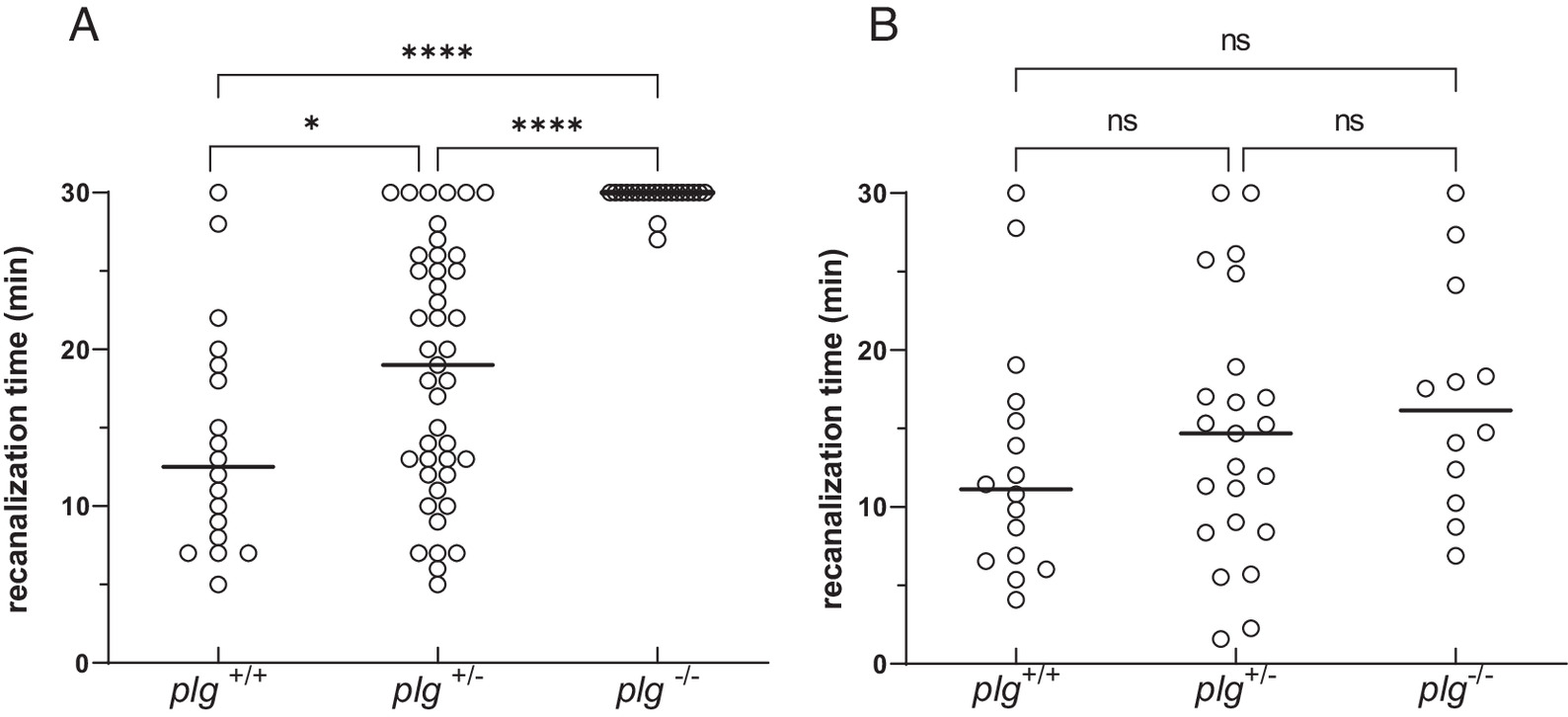Fig. 5 µWheel-mediated recanalization of occlusive thrombi is dependent on plasminogen. (A) CRISPR-mediated genome editing was used to produce a 23 base pair deletion in the plg gene. In the majority of wild-type (n = 18) and heterozygous (n = 43) mutants, µwheels were able to recanalize an occlusive thrombus within 30 min. Conversely, the vast majority of homozygous (n = 20) mutants were unable to do so. Interestingly there was a small, but statistically significant decrease in the percentage of heterozygotes that were able to recanalize, when compared to wild-type siblings. (B) Plasminogen was infused into plg mutant fish [wild-type (n = 16), heterozygous (n = 23), homozygous (n = 12)] and µwheels were able to recanalize the majority of occlusive thrombi within 30 min. Observations were performed prior to genotyping and thus were blinded. Bars represent median recanalization time. (*P < 0.05, ****P < 0.0001 by Mantel-Cox log-rank testing), ns, not significant.
Image
Figure Caption
Acknowledgments
This image is the copyrighted work of the attributed author or publisher, and
ZFIN has permission only to display this image to its users.
Additional permissions should be obtained from the applicable author or publisher of the image.
Full text @ Proc. Natl. Acad. Sci. USA

